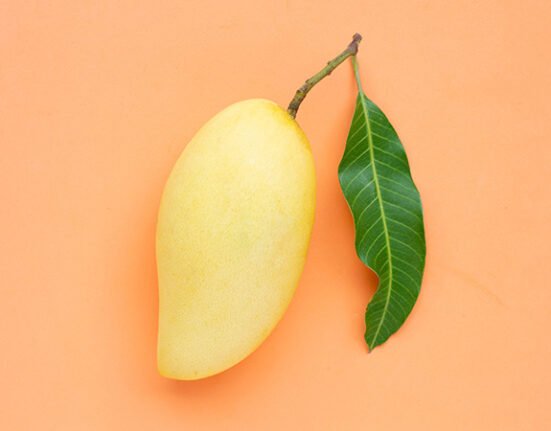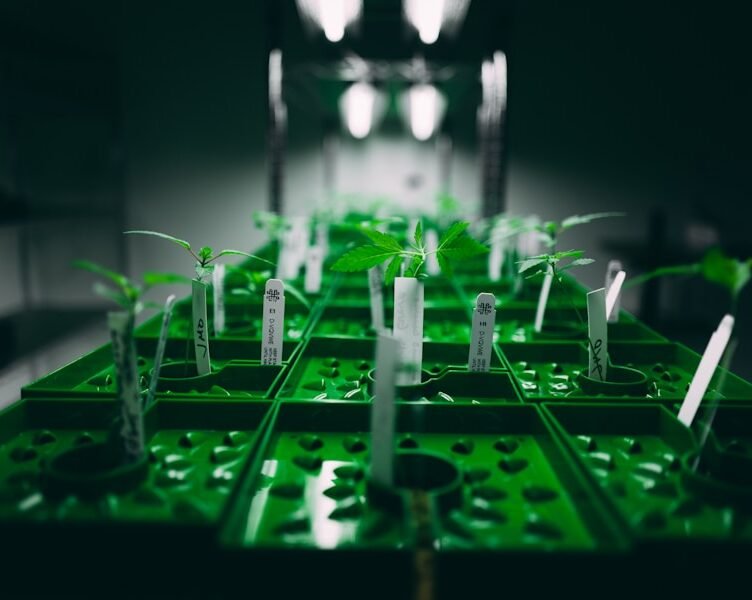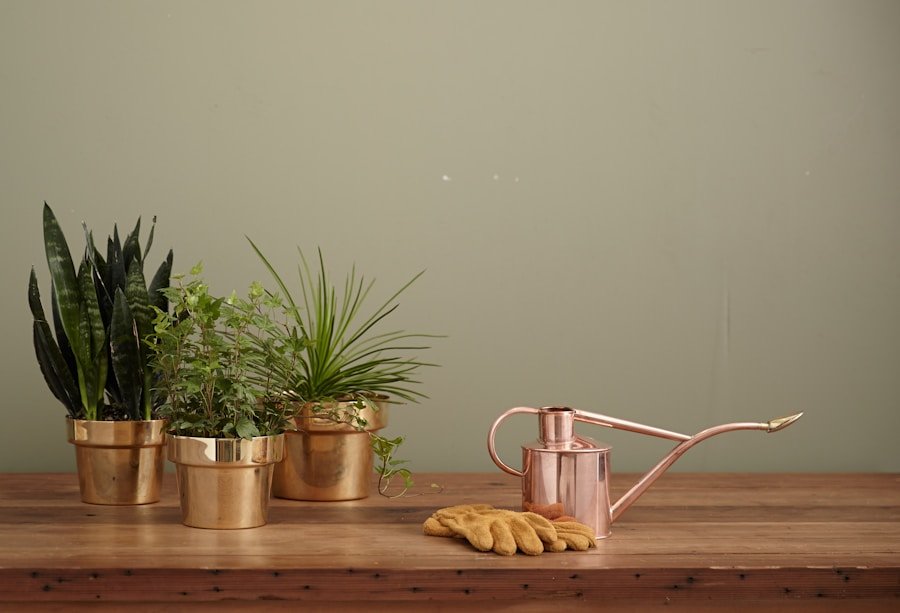When cultivating vegetables indoors, it is crucial to select varieties that are well-suited for indoor environments. Herbs such as basil, cilantro, and parsley, as well as leafy greens like lettuce, spinach, and kale, are ideal for indoor growing. These plants thrive in containers and require minimal space, making them perfect for indoor gardens.
Additionally, compact varieties of tomatoes, peppers, and cucumbers can also be grown indoors with proper care and attention. When choosing vegetables for indoor growing, it is essential to consider the amount of light they require. While leafy greens and herbs can tolerate lower light conditions, fruiting vegetables like tomatoes and peppers necessitate more intense light to produce a healthy harvest.
It is also vital to consider the mature size of the plant, as some varieties may outgrow their containers if not properly managed. To ensure a healthy and productive harvest, it is crucial to select vegetables that are compatible with the available space and light conditions. Leafy greens and herbs are excellent options for indoor gardens, as they require minimal space and can thrive in lower light conditions.
Compact varieties of tomatoes, peppers, and cucumbers can also be grown indoors with proper care and attention. By choosing the right vegetables for indoor growing, you can ensure a successful and productive harvest.
Key Takeaways
- Choose vegetables that are well-suited for indoor growing, such as herbs, leafy greens, and compact varieties of tomatoes and peppers
- Create an ideal growing environment by providing proper ventilation, temperature control, and humidity levels
- Select containers and soil that are well-draining and nutrient-rich to support healthy plant growth
- Provide adequate light and water by placing plants near a sunny window or using grow lights, and watering consistently to prevent drying out or overwatering
- Implement proper nutrient management by using organic fertilizers and regularly monitoring the soil’s nutrient levels
Creating the Ideal Growing Environment
Temperature Control
One of the most important factors to consider is temperature. Most vegetables thrive in temperatures between 65-75°F (18-24°C), so it’s important to keep your indoor garden in a location with consistent temperatures within this range.
Air Circulation and Humidity
Additionally, proper air circulation is crucial for preventing mold and mildew from developing on your plants. You can achieve this by using a small fan to circulate air around your indoor garden. Most vegetables prefer a humidity level of around 50-70%, so it’s important to monitor and adjust the humidity levels in your indoor garden as needed. You can increase humidity by misting your plants with water or by placing a tray of water near your plants to evaporate into the air. On the other hand, if your indoor garden is too humid, you can use a dehumidifier to lower the humidity levels.
Optimizing the Growing Environment
By creating the ideal growing environment with proper temperature, air circulation, and humidity levels, you can ensure that your indoor vegetable garden thrives and produces a healthy harvest.
Selecting the Best Containers and Soil
When it comes to growing vegetables indoors, selecting the best containers and soil is crucial for the success of your indoor garden. The containers you choose should have good drainage to prevent waterlogged soil, which can lead to root rot and other issues. Additionally, the size of the container is important to consider, as some vegetables require more space for their roots to grow than others.
For example, larger plants like tomatoes and peppers will need larger containers than smaller plants like herbs and leafy greens. In addition to choosing the right containers, selecting the best soil is also essential for indoor vegetable gardening. A high-quality potting mix that is well-draining and nutrient-rich is ideal for most vegetables.
You can also add organic matter such as compost or worm castings to improve the soil structure and provide essential nutrients for your plants. It’s important to avoid using garden soil in your indoor containers, as it can become compacted and may contain pests or diseases that can harm your plants. By selecting the best containers with good drainage and choosing a high-quality potting mix, you can provide your indoor vegetable garden with the ideal growing environment for healthy and productive growth.
Selecting the best containers and soil is crucial for successful indoor vegetable gardening. The containers you choose should have good drainage to prevent waterlogged soil, which can lead to root rot and other issues. Additionally, the size of the container is important to consider, as some vegetables require more space for their roots to grow than others.
For example, larger plants like tomatoes and peppers will need larger containers than smaller plants like herbs and leafy greens. In addition to choosing the right containers, selecting the best soil is also essential for indoor vegetable gardening. A high-quality potting mix that is well-draining and nutrient-rich is ideal for most vegetables.
You can also add organic matter such as compost or worm castings to improve the soil structure and provide essential nutrients for your plants. By selecting the best containers with good drainage and choosing a high-quality potting mix, you can provide your indoor vegetable garden with the ideal growing environment for healthy and productive growth.
Providing Adequate Light and Water
| Best Practices for Growing Vegetables Indoors | Benefits |
|---|---|
| Choose the right location | Optimal light and temperature conditions |
| Use quality soil or growing medium | Provides essential nutrients for plant growth |
| Provide adequate water and drainage | Prevents overwatering and root rot |
| Use appropriate containers | Allows for proper root development |
| Monitor and control pests and diseases | Prevents damage to plants and reduces risk of disease |
| Regularly fertilize plants | Ensures healthy growth and high yields |
| Prune and support plants as needed | Promotes better air circulation and prevents breakage |
Adequate light and water are essential for the healthy growth of indoor vegetables. Most vegetables require at least 6-8 hours of sunlight per day to thrive, so it’s important to place your indoor garden in a location with ample natural light or supplement with artificial grow lights if needed. When using grow lights, it’s important to position them at the correct distance from your plants to ensure they receive enough light without burning them.
In addition to light, providing adequate water is crucial for the success of your indoor vegetable garden. It’s important to water your plants consistently, keeping the soil evenly moist but not waterlogged. Overwatering can lead to root rot and other issues, while underwatering can cause wilting and stunted growth.
It’s also important to water at the base of your plants rather than overhead to prevent moisture-related diseases from developing on your plants. By providing adequate light and water, you can ensure that your indoor vegetable garden thrives and produces a healthy harvest. Adequate light and water are essential for the healthy growth of indoor vegetables.
Most vegetables require at least 6-8 hours of sunlight per day to thrive, so it’s important to place your indoor garden in a location with ample natural light or supplement with artificial grow lights if needed. When using grow lights, it’s important to position them at the correct distance from your plants to ensure they receive enough light without burning them. In addition to light, providing adequate water is crucial for the success of your indoor vegetable garden.
It’s important to water your plants consistently, keeping the soil evenly moist but not waterlogged. Overwatering can lead to root rot and other issues, while underwatering can cause wilting and stunted growth. It’s also important to water at the base of your plants rather than overhead to prevent moisture-related diseases from developing on your plants.
By providing adequate light and water, you can ensure that your indoor vegetable garden thrives and produces a healthy harvest.
Implementing Proper Nutrient Management
Proper nutrient management is essential for ensuring that your indoor vegetable garden thrives and produces a healthy harvest. Most vegetables require a balanced supply of essential nutrients such as nitrogen, phosphorus, potassium, calcium, magnesium, and micronutrients like iron, zinc, and manganese. You can provide these nutrients by using a high-quality fertilizer specifically formulated for vegetables or by adding organic matter such as compost or worm castings to your soil.
It’s important to monitor your plants for signs of nutrient deficiencies or excesses, such as yellowing leaves or stunted growth, and adjust your nutrient management accordingly. Additionally, it’s important to avoid over-fertilizing your plants, as this can lead to nutrient imbalances and may harm your plants in the long run. By implementing proper nutrient management with a balanced supply of essential nutrients and monitoring your plants for signs of deficiencies or excesses, you can ensure that your indoor vegetable garden thrives and produces a healthy harvest.
Proper nutrient management is essential for ensuring that your indoor vegetable garden thrives and produces a healthy harvest. Most vegetables require a balanced supply of essential nutrients such as nitrogen, phosphorus, potassium, calcium, magnesium, and micronutrients like iron, zinc, and manganese. You can provide these nutrients by using a high-quality fertilizer specifically formulated for vegetables or by adding organic matter such as compost or worm castings to your soil.
It’s important to monitor your plants for signs of nutrient deficiencies or excesses, such as yellowing leaves or stunted growth, and adjust your nutrient management accordingly. Additionally, it’s important to avoid over-fertilizing your plants, as this can lead to nutrient imbalances and may harm your plants in the long run. By implementing proper nutrient management with a balanced supply of essential nutrients and monitoring your plants for signs of deficiencies or excesses, you can ensure that your indoor vegetable garden thrives and produces a healthy harvest.
Managing Pests and Diseases
Common Pests in Indoor Vegetable Gardens
Aphids, spider mites, whiteflies, and fungus gnats are common pests that can affect indoor vegetable gardens. Regular inspections are crucial to prevent pest infestations. If you notice any signs of pests, take action immediately. Natural pest control methods such as insecticidal soap or neem oil can be used to manage pest infestations without harming beneficial insects or pollinators.
Preventing Disease Outbreaks
In addition to pests, diseases such as powdery mildew, damping off, and root rot can also affect indoor vegetable gardens. To prevent disease outbreaks, it’s essential to keep your indoor garden clean and well-ventilated, avoid overwatering your plants, and remove any infected plant material immediately. Applying beneficial microbes or using disease-resistant plant varieties can also minimize the risk of disease in your indoor vegetable garden.
Effective Management Strategies
By managing pests and diseases with regular inspections, natural pest control methods, and preventative measures, you can maintain a healthy indoor vegetable garden that produces a bountiful harvest. Regular monitoring and prompt action can help prevent pest infestations and disease outbreaks, ensuring a thriving and productive indoor garden.
Harvesting and Maintaining Indoor Vegetable Gardens
Harvesting and maintaining an indoor vegetable garden is an ongoing process that requires attention to detail and proper care. When it comes time to harvest your vegetables, it’s important to do so at the peak of ripeness for the best flavor and nutritional value. You can use sharp scissors or pruners to harvest leafy greens and herbs by cutting them just above the soil line without damaging the plant.
In addition to harvesting your vegetables at the right time, it’s important to maintain your indoor garden by removing any dead or diseased plant material regularly and keeping an eye out for any signs of pest infestations or diseases. It’s also important to rotate your crops regularly by replanting new vegetables in different containers or areas of your indoor garden to prevent nutrient depletion in the soil and reduce the risk of pest infestations or diseases spreading between plants. By harvesting your vegetables at the peak of ripeness and maintaining your indoor garden with regular maintenance tasks such as removing dead or diseased plant material and rotating crops regularly, you can ensure that your indoor vegetable garden continues to produce a bountiful harvest year-round.
Harvesting and maintaining an indoor vegetable garden is an ongoing process that requires attention to detail and proper care. When it comes time to harvest your vegetables, it’s important to do so at the peak of ripeness for the best flavor and nutritional value. You can use sharp scissors or pruners to harvest leafy greens and herbs by cutting them just above the soil line without damaging the plant.
In addition to harvesting your vegetables at the right time, it’s important to maintain your indoor garden by removing any dead or diseased plant material regularly and keeping an eye out for any signs of pest infestations or diseases. It’s also important to rotate your crops regularly by replanting new vegetables in different containers or areas of your indoor garden to prevent nutrient depletion in the soil and reduce the risk of pest infestations or diseases spreading between plants. By harvesting your vegetables at the peak of ripeness and maintaining your indoor garden with regular maintenance tasks such as removing dead or diseased plant material and rotating crops regularly, you can ensure that your indoor vegetable garden continues to produce a bountiful harvest year-round.
In conclusion, Growing vegetables indoors can be a rewarding experience that allows you to enjoy fresh produce year-round. By following best practices such as choosing the right vegetables for indoor growing, creating an ideal growing environment with proper temperature, air circulation, and humidity levels; selecting the best containers with good drainage; providing adequate light and water; implementing proper nutrient management; managing pests and diseases; harvesting at peak ripeness; maintaining regular maintenance tasks; you can ensure
FAQs
What are the best vegetables to grow indoors?
Some of the best vegetables to grow indoors include tomatoes, peppers, lettuce, spinach, kale, and herbs like basil, parsley, and cilantro.
What are the essential factors for growing vegetables indoors?
Essential factors for growing vegetables indoors include adequate light, proper temperature and humidity levels, good air circulation, and appropriate soil or growing medium.
How much light do indoor vegetables need?
Most vegetables require at least 6-8 hours of direct sunlight or 12-16 hours of artificial light per day. Consider using grow lights to supplement natural light if necessary.
What type of containers are best for growing vegetables indoors?
Choose containers that are at least 6-12 inches deep with drainage holes to allow excess water to escape. Options include plastic or ceramic pots, fabric grow bags, or hydroponic systems.
What is the best soil for growing vegetables indoors?
Use a high-quality potting mix that is well-draining and nutrient-rich. Consider adding perlite or vermiculite to improve drainage and aeration.
How often should indoor vegetables be watered?
Water indoor vegetables when the top inch of soil feels dry to the touch. Avoid overwatering, as this can lead to root rot, and ensure proper drainage to prevent waterlogged soil.
What are common pests and diseases to watch out for when growing vegetables indoors?
Common pests and diseases that may affect indoor vegetables include aphids, spider mites, whiteflies, powdery mildew, and damping-off. Regularly inspect plants for signs of infestation or disease and take appropriate measures to control them.
What are some tips for maximizing indoor vegetable growth and productivity?
To maximize indoor vegetable growth and productivity, provide adequate light, maintain proper temperature and humidity levels, fertilize as needed, prune plants to encourage bushier growth, and pollinate flowers if growing fruiting vegetables like tomatoes or peppers.








2 Comments